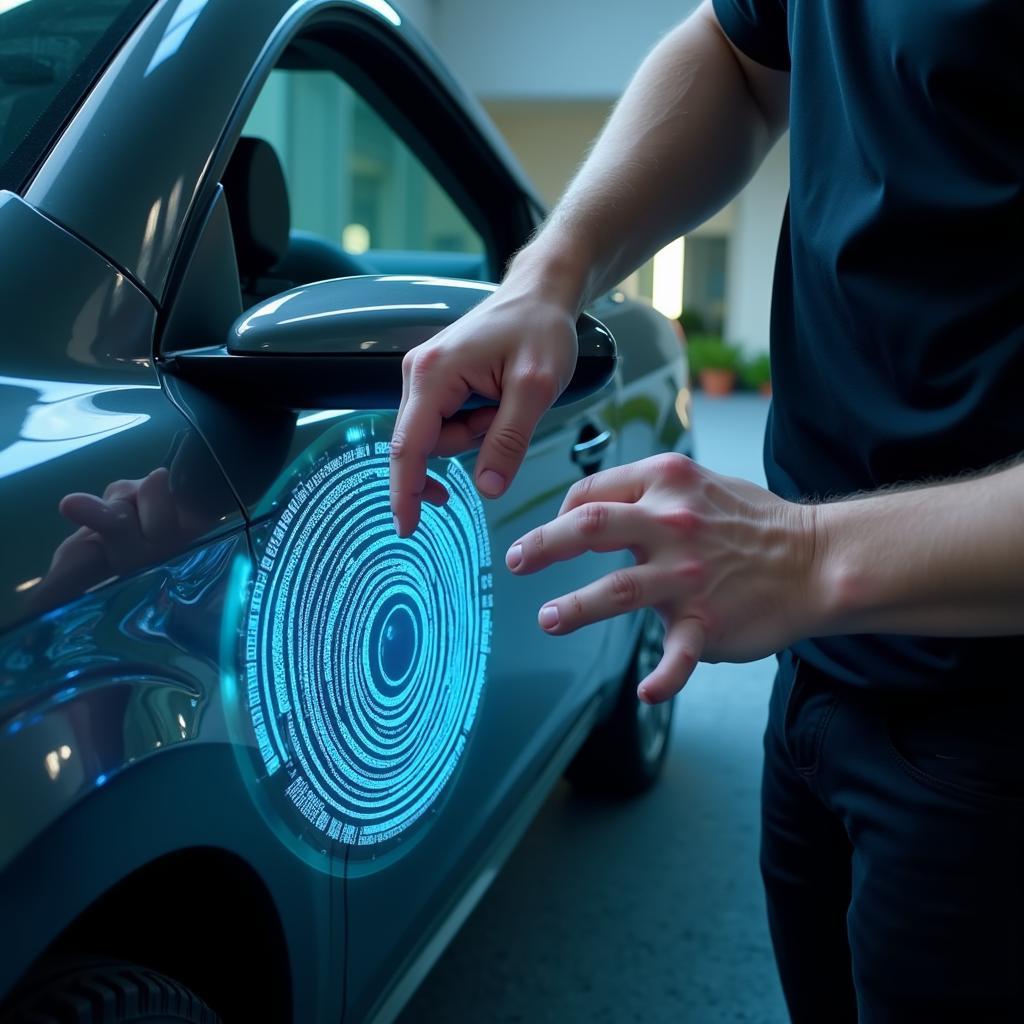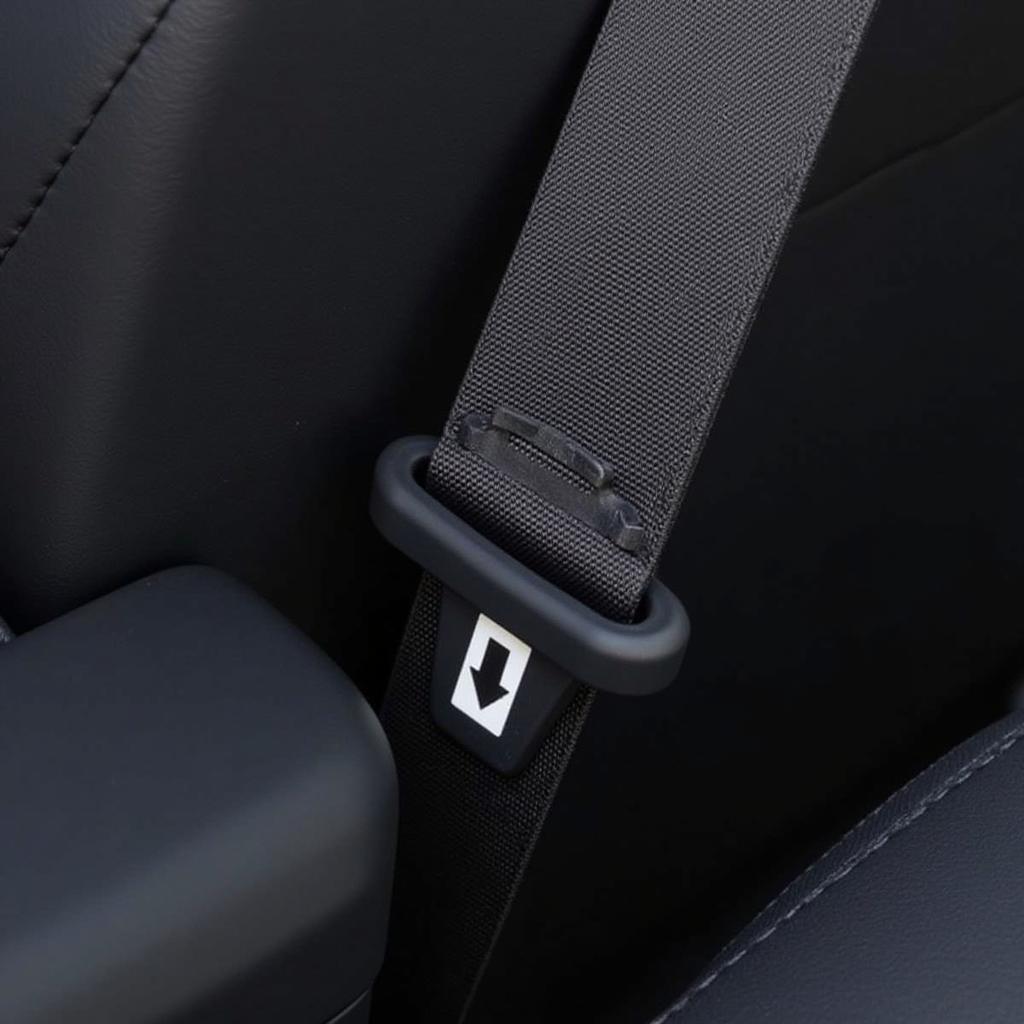The chrysler 300 brake warning light can be a jarring sight on your dashboard. It signals a potential issue with your braking system, demanding immediate attention. Ignoring this warning could compromise your safety and lead to costly repairs down the road. This comprehensive guide will explore the common causes of the chrysler 300 brake warning light, provide troubleshooting steps, and discuss solutions, ranging from simple DIY fixes to more complex repairs requiring professional assistance.
Understanding the Chrysler 300 Brake Warning Light
The brake warning light is designed to illuminate when your car’s onboard computer detects a problem within the braking system. This system is complex and includes several components, from the brake pedal and master cylinder to the brake lines, calipers, rotors, and brake pads. A fault in any of these components can trigger the warning light. It’s crucial to understand that this light can indicate various issues, from low brake fluid to more serious problems like a malfunctioning ABS system.
Common Causes of the Chrysler 300 Brake Warning Light
Several factors can trigger the brake warning light in your Chrysler 300. Let’s explore some of the most common culprits:
- Low Brake Fluid: This is often the most straightforward cause. Brake fluid is essential for transferring pressure from the master cylinder to the brakes, enabling your car to stop. Low brake fluid can indicate a leak in the brake lines or a worn-out master cylinder.
- Worn Brake Pads: Brake pads are designed to wear down over time. When they become too thin, the brake warning light will activate as a safety measure.
- Faulty ABS System: The Anti-lock Braking System (ABS) prevents wheel lockup during hard braking. A malfunctioning ABS module or sensor can trigger the warning light.
- Parking Brake Engaged: Sometimes, the simplest explanation is the correct one. If your parking brake is even slightly engaged, the warning light might illuminate.
- Faulty Brake Light Switch: The brake light switch activates your brake lights when you press the brake pedal. A faulty switch can sometimes cause the brake warning light to come on as well.
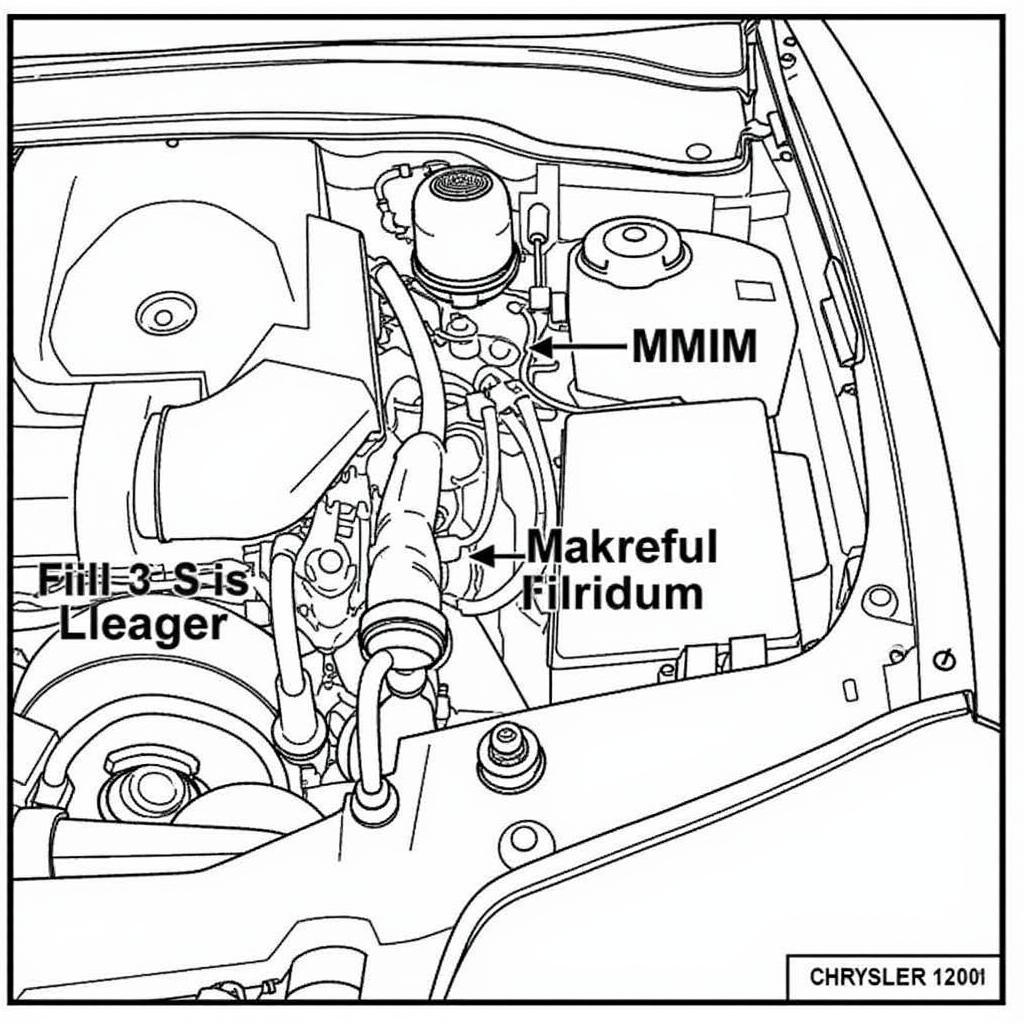 Chrysler 300 Brake Fluid Reservoir
Chrysler 300 Brake Fluid Reservoir
Troubleshooting the Chrysler 300 Brake Warning Light
If your Chrysler 300’s brake warning light comes on, don’t panic. Here’s a step-by-step guide to help you troubleshoot the problem:
- Check the Parking Brake: Ensure the parking brake is fully disengaged. This simple check can often resolve the issue.
- Inspect Brake Fluid Level: Locate the brake fluid reservoir under the hood and check the fluid level. If it’s low, add brake fluid of the correct type as specified in your owner’s manual.
- Check for Leaks: Inspect the brake lines and connections for any signs of leakage. Leaking brake fluid can appear as a dark, oily substance.
- Inspect Brake Pads: Visually check the brake pads through the wheel spokes. If they appear thin or worn, they likely need replacement.
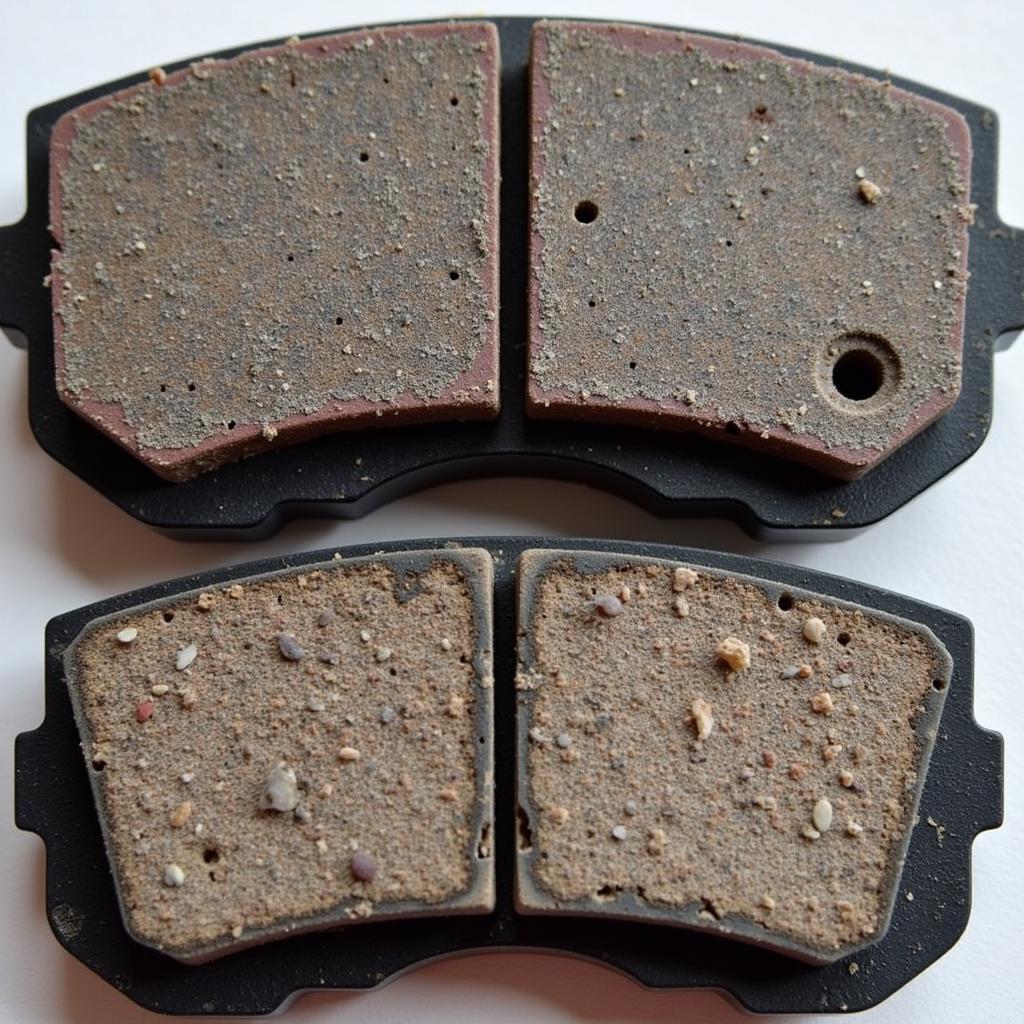 Worn Brake Pads on a Chrysler 300
Worn Brake Pads on a Chrysler 300
When to Seek Professional Help
While some brake warning light issues can be resolved with simple DIY fixes, others require professional expertise. If you’ve checked the basics and the warning light persists, or if you notice any unusual braking behavior, such as grinding noises, a soft brake pedal, or pulling to one side, it’s time to take your Chrysler 300 to a qualified mechanic. They can diagnose the problem using specialized diagnostic tools and perform the necessary repairs.
“Ignoring a persistent brake warning light is like ignoring a ticking time bomb,” says John Smith, ASE Certified Master Technician. “It’s always better to be safe than sorry when it comes to your brakes.”
Remote Diagnostics and Programming
Modern technology allows for remote diagnostics and programming, providing a convenient and efficient way to address certain Chrysler 300 brake warning light issues. Through specialized software, technicians can access your vehicle’s onboard computer remotely, diagnose the problem, and even reprogram certain modules, potentially eliminating the need for a physical visit to the repair shop.
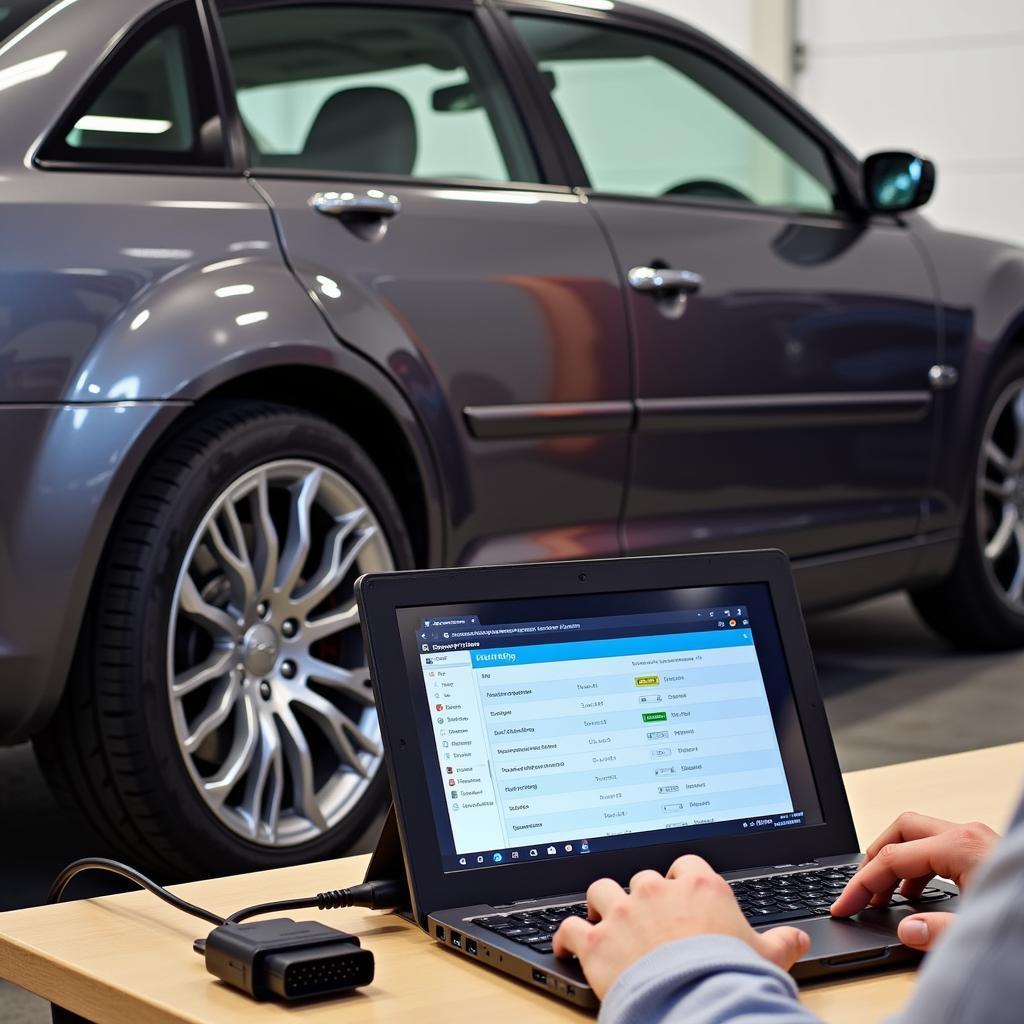 Remote Diagnostics for a Chrysler 300
Remote Diagnostics for a Chrysler 300
Conclusion
The chrysler 300 brake warning light is a crucial safety feature that should never be ignored. By understanding its potential causes and following the troubleshooting steps outlined in this guide, you can address the issue effectively and ensure your safety on the road. Remember, when in doubt, always consult a qualified mechanic for professional assistance.
“Regular brake maintenance is key to preventing issues and ensuring the longevity of your braking system,” advises Maria Garcia, Automotive Engineer specializing in brake systems. “Regular inspections and timely replacements of worn parts can save you money and headaches in the long run.”
FAQ
- What should I do if my Chrysler 300 brake warning light comes on while driving? Pull over safely as soon as possible and check the parking brake, brake fluid level, and look for any visible leaks. If you’re unsure, call a tow truck.
- Can I drive my Chrysler 300 with the brake warning light on? It’s not advisable. Driving with a brake warning light on can be dangerous and potentially lead to further damage.
- How often should I check my Chrysler 300’s brake fluid level? Check your brake fluid level at least once a month as part of your regular vehicle maintenance.
- How much does it cost to replace brake pads on a Chrysler 300? The cost varies depending on the type of brake pads and labor rates in your area, but it typically ranges from $150 to $300 per axle.
- How can I tell if my Chrysler 300’s ABS system is malfunctioning? Besides the brake warning light, you might notice a pulsating brake pedal during hard braking or an unusual ABS warning light on the dashboard.
- Is it safe to add brake fluid myself? Yes, as long as you use the correct type of brake fluid specified in your owner’s manual.
- What is remote diagnostics and how can it help with my Chrysler 300 brake warning light? Remote diagnostics allows a technician to access your vehicle’s computer remotely to diagnose problems and potentially reprogram certain modules, offering a convenient alternative to a physical visit to the repair shop.

